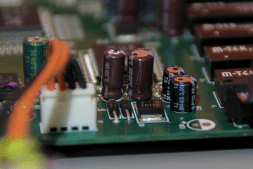Designers looking to build more advanced systems operating at higher data rates and bandwidths tend to rely on materials with low dielectric constant values, i.e., low-Dk materials. It has gotten to the point where every high-speed PCB design guide implies that high-speed and RF designs will not function without a low-Dk material like Rogers or Arlon. The reality is that … [Read more...]
SI Metrics That Have Taken Us to 224G
In the world of signal integrity, we rely on many important metrics to qualify high-speed channel designs, both before prototyping and during prototype testing. There is a common group of signal integrity metrics that appear in high-speed digital interface standards and which need to be implemented in printed circuit boards and packages. These signal integrity metrics … [Read more...]
Techniques For Mitigating Intrapair Skew-Induced EMI With Shielded Connectors
Introduction EMI stands for electromagnetic interference. There are several methods of EMI transmission from the source to the victim. Two of them are radiated EMI and conducted EMI. Radiated EMI happens when an electrical device produces an RF signal that is picked up and causes unwanted effects. Conducted EMI is unintentional energy carried out of the source via signal … [Read more...]
Fundamental Oscilloscope Probes
As electronics have become more advanced, so has the equipment used to measure their signal behavior and system performance. In the realm of EMC compliance, oscilloscopes are one of the important tools used to measure signals, hunt down noise sources, and identify time-domain measurements that may contribute to radiated or conducted emissions. Without a properly selected probe, … [Read more...]
Knee Frequency is A Misleading Bandwidth Metric
INTRODUCTION There is a transmission line critical length rule that is often used in high-speed PCB design by novice engineers. This rule should not be used and is not appropriate for high-speed PCBs. The bandwidth limit of a digital signal or a high-speed digital channel is often used in certain calculations to get estimates of channel behavior. For example, the knee … [Read more...]
Stop Using the Critical Length Rule in High Speed PCB Design
The PCB world is in flux and an inrush of new designers is appearing on the horizon. Unfortunately, marketing material from manufacturers and CAD companies continues to spread outdated design guidelines that are easily misapplied, or they are simply wrong. One of these design rules that appears to be endemic is the critical length rule for transmission lines. This rule is used … [Read more...]











